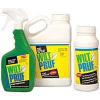Gardening with Clay Soils and Wet Sites
Gardening and landscaping at homes where there is clay soil can be a challenge. There are two easy ways to have a healthy, beautiful and successful landscape. Number one is to consider raised beds, especially for foundation planting, perennial beds and vegetable gardens. By creating raised beds that are just one to one and a half feet above the natural grade of the land you will lift your plants roots out of that standing wet in the spring. Go at least two feet for large shrubs. This will expand the types and varieties of perennials, annuals and shrubs that you will be able to use in the landscape to beautify your home with. Otherwise the second way is to simply plant material that can tolerate the wet clay soil and to prepare the beds properly before planting anything. It’s hard to amend soils and improve their drainage and condition after you have already installed your landscape, doing it before hand will save you time and labor later. The absolute number one best thing you can do for clay soils before planting is to simply amend it with organic matter such as compost. Gypsum can also be added to help with texture and drainage. This will work for small trees, shrub borders, annual beds and perennial gardens. For large trees it’s best just to stick with those that don’t mind living in the clay since because the root system spread out to great distances and you should plant them with at least 75% native soil backfill. The following is a list of plants and trees that do well in moist, clay soils and can tolerate that slow draining wet in the spring.
Personal note: I’ve been gardening in clay ever since I could hold a nasturtium seed and poke it into the ground myself. In general I find that it can take about two years more for perennials, shrubs and trees to really start going when planted in clay. Also, my garden is at least two weeks later then those around us since we are lower lying and collect a lot of puddles all spring and have part shade so the ground doesn’t warm up as quickly. Here I’m mostly talking about my ground level perennial border in shade, my raised beds in full sun warm up quicker and don’t hold puddles. My gardening style has often been trial and error with the clay, though over the years I have found truth in the list below which has been gleaned from several text.
Here’s some more planting ideas that have worked for me: Privet hedge, Quince, Lilac, White Fringe Tree, Peony, Wisteria, Trumpet Vine, Vinca, Crocosmia, Ageratum ‘Blue Horizon’, Dragon Wing Begonia, Impatiens, Biennial Sweet William, Coreopsis ‘Moonbeam’ and ‘Rosea’, Spurge, Mockorange, Perennial Hibiscus, Thrift, Heliopsis, Thyme.
Here is a sad list of those that have languished for about one to two years then refused to come up anymore or I moved them out of the wet clay out of compassion for the poor things: Oriental Poppy, Liriope, Yarrow, Hyacinth, Astrantia, Chrysanthemum, Variegated upright Sedum.
Here are some of my faithful plants that return every spring and are sooooo happy I actually have to beat them back and give portions away to anyone who will take them: Black-Eyed Susan, Daylily, Purple Obedient Plant, Lily-of-Valley, Ajuga, Ferns, Snowdrops, Anaphalis (Dry clay spot), Goose-neck Loosestrife, Siberian Iris.
Personal note: I’ve been gardening in clay ever since I could hold a nasturtium seed and poke it into the ground myself. In general I find that it can take about two years more for perennials, shrubs and trees to really start going when planted in clay. Also, my garden is at least two weeks later then those around us since we are lower lying and collect a lot of puddles all spring and have part shade so the ground doesn’t warm up as quickly. Here I’m mostly talking about my ground level perennial border in shade, my raised beds in full sun warm up quicker and don’t hold puddles. My gardening style has often been trial and error with the clay, though over the years I have found truth in the list below which has been gleaned from several text.
Here’s some more planting ideas that have worked for me: Privet hedge, Quince, Lilac, White Fringe Tree, Peony, Wisteria, Trumpet Vine, Vinca, Crocosmia, Ageratum ‘Blue Horizon’, Dragon Wing Begonia, Impatiens, Biennial Sweet William, Coreopsis ‘Moonbeam’ and ‘Rosea’, Spurge, Mockorange, Perennial Hibiscus, Thrift, Heliopsis, Thyme.
Here is a sad list of those that have languished for about one to two years then refused to come up anymore or I moved them out of the wet clay out of compassion for the poor things: Oriental Poppy, Liriope, Yarrow, Hyacinth, Astrantia, Chrysanthemum, Variegated upright Sedum.
Here are some of my faithful plants that return every spring and are sooooo happy I actually have to beat them back and give portions away to anyone who will take them: Black-Eyed Susan, Daylily, Purple Obedient Plant, Lily-of-Valley, Ajuga, Ferns, Snowdrops, Anaphalis (Dry clay spot), Goose-neck Loosestrife, Siberian Iris.
April 20, 2010
|
View: 2562







